John Hurrell – 31 July, 2012
I responded to the items that had some visceral wallop, with a scale that affected me bodily - and much here doesn't. Gordon-Smith seems to have no ‘eye' for work that has drama or is compositionally compelling. A lot of this show might be technically remarkable or innovative but it is also visually forgettable.
Auckland
Group show
Ubiquitous: Aspects of Contemporary Pattern
Curated by Ioana Gordon-Smith
30 June - 1 September 2012
Ubiquitous: Aspects of Contemporary Pattern is an exhibition that looks at the popularity of decorative motifs in craft and art. Rather than formally analysing in depth the various structural templates and systems of pattern’s internal dynamic, it examines in general the varieties of use to which it is put - and as you can tell from the title, its presence in all cultures.
Therefore the notion of pattern here is not tightly regimented in terms of repeated templates, inversion, mirroring, half-drop etc. Much is loosely organic in its organisation and strictly speaking more about ornamental pulse than pattern: something not mathematically precise and which - as the example from Darren Glass’s 105 apertured, rolling pinhole camera (Hefty Roller) shows - may be process driven, or as in Blue Willow referenced designs, exploits curving linear rhythms.
Ioana Gordon-Smith, the show’s curator, has picked works from twenty artists that include glassware, rugs, brooches, photography, sculpture, painting, prints, fabric hangings, screens, clothing and ceramic tiles.
I responded to the items that had some visceral wallop, with a scale that affected me bodily - and much here doesn’t. There is not sufficient work that has drama or is compositionally compelling. A lot of this show might be technically remarkable or innovative but it is also visually forgettable.
Of the more dynamic works, the Andrew McLeod / Dilana rug, with its competing families of swirling kowhaiwhai pattern and densely packed koru motifs (surrounded by fine tendrils) is inventive and admirably unpredictable with its restless energy.
Sandra Thomson’s printed hangings attack creationism and arms suppliers, and though didactic and heavyhanded, succeed as fascinating images you keep on looking at - due to her brilliant drawing and organisational skill. In the centre of the room they dominate the space as an activist update of William Morris. Leanne Joy Lupelele Clayton also refers to Morris. Her Bitter and Sweet screenprint shows lemons and oranges on his design of a pomegranate plant, and seems a subtle Samoan comment on New Zealand society. It is also compositionally daring with its nonrepeatable clusters of citrus.
Three exhibits here focus on the Blue Willow ceramic design, originally adapted by the British from the Chinese, and here in New Zealand put out by Crown Lynn. Adrian Hailwood has an original Blue Willow design placed on a t-shirt (it looks rather lame in an art context), Robin White does her own wonderful version in an etching, Braveheart, using ‘New Zealand’ motifs very similar to those found in her paintings and screenprints, and Neil Dawson has a flat sculpture blending a Blue Willow plate with two delineated I-beams. His contribution, Plate 6, 2008, is hung too low and too close to wall mouldings and other exhibits. It needs to be up high in isolation.
One see-through work that does function well in the space is David Trubridge’s elegant Manuka Screen, 2011. Consisting of a rectangular lattice of suspended flower forms, its six petalled shapes made of flat bamboo plywood and thin strips of polycarbonate create a pattern that is simple but never boring, especially when enhanced by light and shadow.
Another highlight is Gina Matchitt’s black and white tukutuku frieze made of hundreds of computer keys in descending diamond formations. You have to stand close to see the identifying letters and numbers that speak of the transition from traditional Māori wall patterns and a local environs to the power of written language and the global reach of cyberspace.
A couple of the exhibits are in fact photographs of items which should themselves be in the gallery space. This, after all, is a design show (not a magazine) and so the aim should be direct engagement with the visual and tactile properties of each selected project. To have a sample of the undulating aluminium cladding designed by Ashley Allen and Stephane Rondel for the Metro building and Genevieve Packer’s Souvenir: Flock wallpaper design on its original calfskin would have made their attractiveness as providers of pattern so much clearer, and in the case of Packer, with wit.
Even though it contains two informative essays by Gordon-Smith and Anna Miles, the catalogue, designed in A4 format, like the show itself, lacks flair. If done well a show like this (with a classy attendant publication) could be wildly popular. What should be unrelentingly exuberant and celebratory is in fact often slightly dreary.
Objectspace obviously needs a quality designer who can make individual images look good on the page, not butt six together in a manner that looks cheap and tacky. Each catalogue publication should be an artwork in itself, a desirable item to be fought for, an object you are proud to insert into your library.
Part of the problem is the venue. Objectspace urgently needs to be turned into a proper gallery that is lined with plain mdf lined walls from ceiling to floor. That would allow some large flat exhibits (like rugs and sculpture) to be displayed high up so they can be seen from a distance. Having said that, this show does look better than other exhibitions I’ve seen here. There are not so many vitrines to negotiate around this time. However if it wants to be taken seriously, Objectspace has to get its walls up to scratch to compete with its Karangahape and Ponsonby Rd rivals.
John Hurrell
Recent Comments
John Hurrell
I was being a little facetious with the 'real' but making the point if you want to break down down ...
Simon Esling
Hi John, Can you please explain what you mean when you use the term 'real artists.' And do all spaces ...
John Hurrell
Philip, are you telling me not to be mean to baby curators, that I should ask about a contributor's age ...
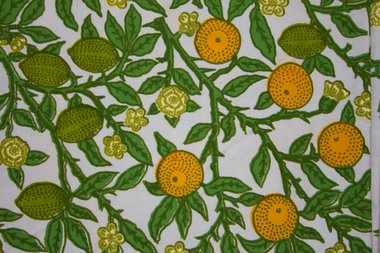
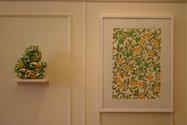
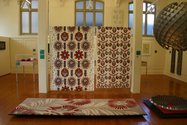
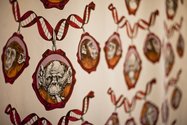
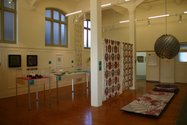
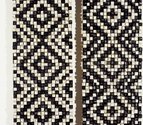
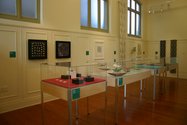

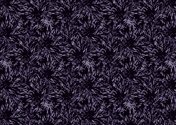

 Advertising in this column
Advertising in this column Two Rooms presents a program of residencies and projects
Two Rooms presents a program of residencies and projects



This Discussion has 4 comments.
Comment
philip clarke, 9:32 a.m. 1 August, 2012 #
John Hurrell in his Scrutinising Pattern review of Ubiquitous: Aspects of contemporary pattern at Objectspace misses a few fundamentals.
The formalistic approach Hurrell suggests that we should have taken might have been appropriate for another project, but our project is quite clearly focused on considering the pervasive and enduring appeal of pattern for a number of contemporary practitioners, principally in relation to contemporary craft and design, rather than the formal qualities of pattern. Hurrell complains that some works lack drama which might indicate that the varying scales of works associated with various making traditions aren’t engaging for him: that’s his issue not ours and it hasn’t been an issue for visitors.
John exhorts us to modernise, (or is that moderne-ise?) and become a proper gallery to ‘compete with ...[local] rivals’. I’m wondering who these rivals are as we’re unique in New Zealand as a public space dedicated to craft and design practices and discourses. The fact that these discourses are different from fine arts discourses seems to have been overlooked by Hurrell, but not by us; that is why we exist. In terms of his comments about the space, Objectspace isn’t particularly interested, architecturally or conceptually, in erasing tradition. In fact one of the themes we’re consciously keen to promote through our programme is a living connection with tradition. This may not be a very mid- twentieth century modernist position, but it is ours.
As Hurrell knows, Ubiquitous: Aspects of contemporary pattern is the curatorial debut of its 23 year old curator, Ioana Gordon-Smith. In a country where curatorship in relation to design history is simply not taught one of Objectspace’s roles is to nurture new craft and design curatorial voices. For this reason I regard a number of Hurrell‘s comments as simply ungenerous.
The publication associated with the show is our 51st hard copy publication. This in itself is remarkable for an organisation that has been in existence for less than a decade and our publication programme is a significant contribution to contemporary local discourse in the fields of craft, design and the applied arts. Most of these publications, including the Ubiquitous publication, have been designed by award winning NZ designer Alan Deare, who as recently as July 2012, won PANZ Awards for his book designs.
I think this would have been a more useful review if the reviewer had allowed his eye to be absorbed by pattern/s rather than having turned up with the expectation of being ‘’viscerally walloped”.
Philip Clarke, Objectspace
John Hurrell, 11:21 a.m. 1 August, 2012 #
Philip, are you telling me not to be mean to baby curators, that I should ask about a contributor's age before I review each show, and that Objectspace is not really a gallery? If so, you'd better make sure contracted staff don't invite real artists, so that sculptors like Neil Dawson can count on their work never being inadequately presented.
Simon Esling, 12:39 p.m. 1 August, 2012 #
Hi John,
Can you please explain what you mean when you use the term 'real artists.' And do all spaces have to be blank-walled white cubes? It probably makes it harder to work with, what with having big beautiful windows and stuff, but to me that's part of the challenge and it should be worked with or against, not just boarded over. Maybe this show doesn't succeed within the space. Obviously that happens sometimes and then it would be fair to point it out as a curatorial flaw. But to suggest the whole space needs a refit seems a bit over the top. After all, it is called Objectspace not Artspace, so you can determine the difference in agendas from the names and then work back from there.
Regards,
Simon
John Hurrell, 1:22 p.m. 1 August, 2012 #
I was being a little facetious with the 'real' but making the point if you want to break down down the distinction between the applied arts and fine arts (I thought that was Objectspace's aim?) why use a space that can't cope? I'm not advocating the constant use of 'the white cube' - that can get really tedious - but when there is molding and stone walls all over the place the room needs to be made more accommodating. For Objectspace's agenda (and not necessarily Artspace-style shows) a more functional fitting seems logical. And as you suggest, maybe the odd window might keep it from being claustrophobic and boxlike.
Participate
Register to Participate.
Sign in
Sign in to an existing account.